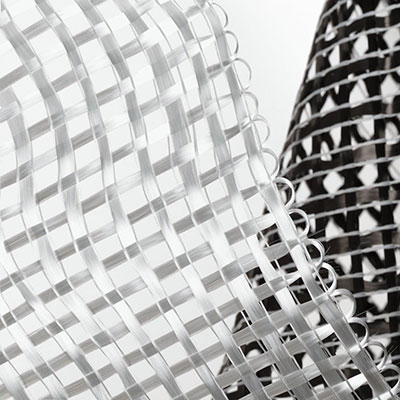Technologies
We’re offering a wide range in hightech-texile products from carbon, glass and aramid fibres. High-strength polyester, basalt and other fibres for technical applications are part of our portfolio as well. Our textiles are manly used for fibre-reinforced composites. We’re supplying costumers from different industries like aerospace, automotive, wind energy, marine and sport industry. Our costumers appreciate our possibilites of combining fibre selections and textile design.
We offer stiff or flexible textiles for optimized handling and draping.
Benefits:
- high mechanical strength and rigidity with low weight
- optimized fibre input
- easy handling
- customer- and demand-oriented dimensioning
- suitable for all kinds of resin systems
Gerster TechTex is producing with the following technologies:
Weaving (wide and tape weaving)
Weaving, as one of the oldest textile-forming processed, can be used perfectly for producing high-tech textiles. To produce a woven fabric, two yarns are interlaced, so that they cross each other at a right angle. A woven fabric is comprised of warp yarns in the longitudinal direction and weft yarns in the crosswise direction. The warp and weft yarns may be the same fiber and same size or they may be different in fiber type and size.
In addition to classic woven fabrics we are producing grid structures and leno-fabrics in 60cm-300cm width. Our narrow looms produce belts, hoses and multi-layer fabrics from only little millimeter up to 350mm. The shuttle weaving technology is still used at Gerster TechTex.
Benefits:
- use of different fibre types and sizes
- maximum density
- demand-oriented use of material
- high flatness
- flexible in width and structure diversity
Warp knitting
Knitted textiles are made from stitches. They are manly used to connect the high-performance fibres like carbon, glass or aramid to one surface. The fibres can be arranged flexible and more or less load-capable structures arise. We produce narrow ribbons from only 2 mm up to 1000 mm wide textiles. The connection with other textiles as base materials, e.g. nonwovens, is possible. Our post-drapable non-crimp fabric DRAPFIX guarantees easy draping and therefore cost cutting in manufacturing composite components.
Benefits:
- use of different fibre types and sizes
- great variety of combinations
- waste and cost optimization
- load-capable fibre orientation
- stitching and connecting fibres onto base materials (e.g. nonwovens)
Braiding
Traditionally braiding is the manufacturing technology for cords and ropes. Braids can be flat, round or tubular and are formed by the interlacing of at least three thread systems. Besides the setting of the thread angle, braiding around cores and profiles up to a diameter of 35mm is possible. In addition, the integration of non-crossed high-performance fibres, so-called stationary threads, is possible in axial direction.
Benefits:
- regular density
- closed fabric appearance
- variable thread angles and diameters
- load-capable fibre orientation
- 2D- or 3D- structures
Twisting
We manufacture cords by twisting several rovings or by winding around stretched yarn layers. The cords are often produced as precursors and are used as gussets in 3D- components. They get a knitted or braided sleeve.
Benefits:
- Individual design
- contour adaption to the desired geometry
- variable diameters
- ideal fibre orientation
Coating
On request - we are coating our tapes for optimum performance characteristics. Powder coating is possible up to a width of 300mm and strip coating up to a width of 70mm. Furthermore adhesive- webs, -nonvowens, -films and -points can be applied.
Assembling
On request - we manufacture our products ready-made according to customer specifications. We offer numerous ways- from cutting to stitching together several fabric layers or creating profiles. We are happy to ship the products in the desired form.


